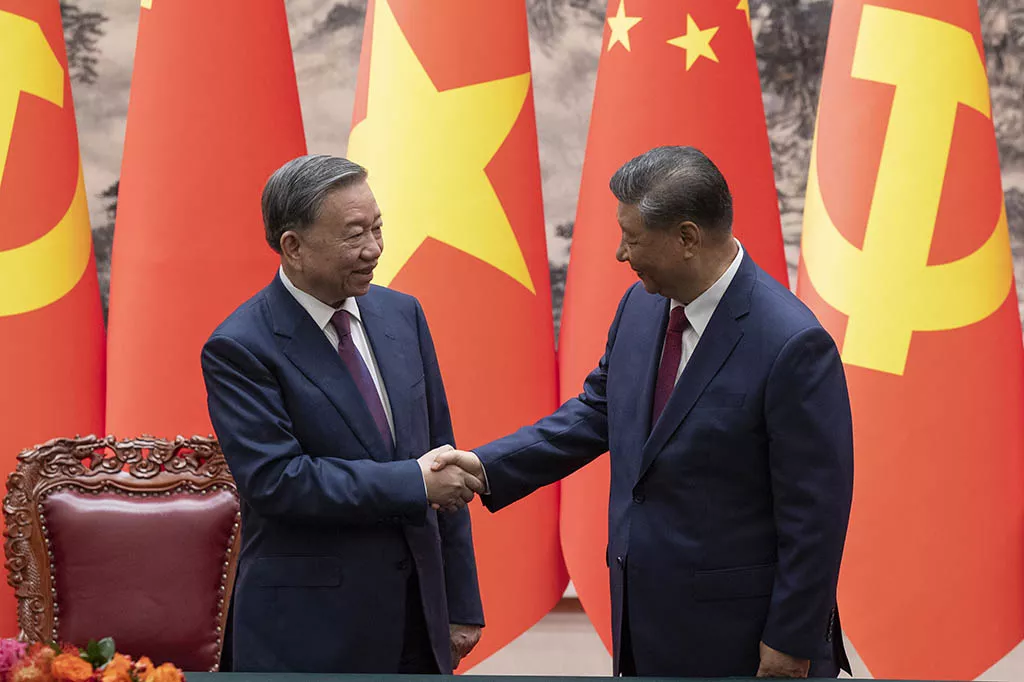
OVER a century ago, the Beijing-Zhangjiakou railway line heralded a remarkable engineering achievement under the visionary leadership of Zhan Tianyou, fondly known as the “Father of Chinese Railways.”
Little did he anticipate that the very track he laid would one day accommodate state-of-the-art bullet trains, operating autonomously at speeds of 350 kilometres (220 miles) per hour. As one of the highlights of the 2022 Beijing Winter Olympics, it cut travel time from three hours to just 60 minutes for the 110-mile journey.
In just 15 years, China has built a railway network stretching over 40,000 kilometres, surpassing the circumference of the entire globe. Moreover, it is on track to reach 70,000km by 2035, marking an unparalleled transformation which will redefine travel across the nation.
Demand-driven Connectivity
The invention of trains originated in Britain, before rising to prominence in countries such as Germany and Japan. However, fast forward to the present day, and it is China’s trains that have taken the global lead, with the country establishing itself as a major exporter of high-speed rail technology. What led to this global shift?
From the freezing-cold weather of the north-east to the almost tropical climate of the Guangdong-Hong Kong-Macao Greater Bay Area, China has a vast and complex geography as well as a huge population. The diverse terrain once posed transport challenges, especially in remote and impoverished areas.
The dilemma also spurred innovation, resulting in nearly two decades of transformation. The period since 2007, when high-speed rail services were first introduced in China, have been characterised by unprecedented nationwide connectivity, interlinking urban hubs to remote villages.
Today, high-speed trains travel deep into high-altitude and plateau regions, allowing for seamless transitions over bridges and across waterways.
International Tech Sharing
Beyond self-reliance, China’s achievements in high-speed rail extend to other parts of the globe, by establishing standards that are now embraced worldwide.
The launch of “Whoosh,” connecting one of the world’s busiest travel corridors linking the Indonesian cities of Jakarta and Bandung, marks the first high-speed railway in south-east Asia. It’s also the first overseas construction project that fully leverages Chinese railway systems, technology, and industry.
Beyond cutting travel time between the cities from over three hours to about 40 minutes, it could reshape the sharing of knowledge and technology in countries like Indonesia, becoming a catalyst for positive change.
“The Jakarta-Bandung high-speed train marks the modernisation of our mass transportation, which is efficient and environmentally friendly,” said Indonesian President Joko Widodo when he was inaugurating the High-Speed Railway at Halim Station in Jakarta in October.
Vision Bound for the Future
Every two years, global experts gather at Modern Railway in Beijing, one of the most influential exhibitions in the Asian rail transportation industry.
At this year’s meeting, China State Railway Group, which is responsible for the development of national railroad infrastructure, laid out its vision to attending organisations and exhibitors worldwide. The blueprint involves improving international connectivity, promoting green and low-carbon development, and boosting the intelligence of railways.
As China celebrates its hard-earned high-speed rail triumph, it’s clear the journey is far from over. The connectivity it has achieved, thanks to efficient planning and execution, is a global necessity. It goes far beyond the national interest of China, and the country’s “pedal to the metal” approach could propel the entire world into the fast lane.
Dai Kaiyi is a reporter with CGTN.











